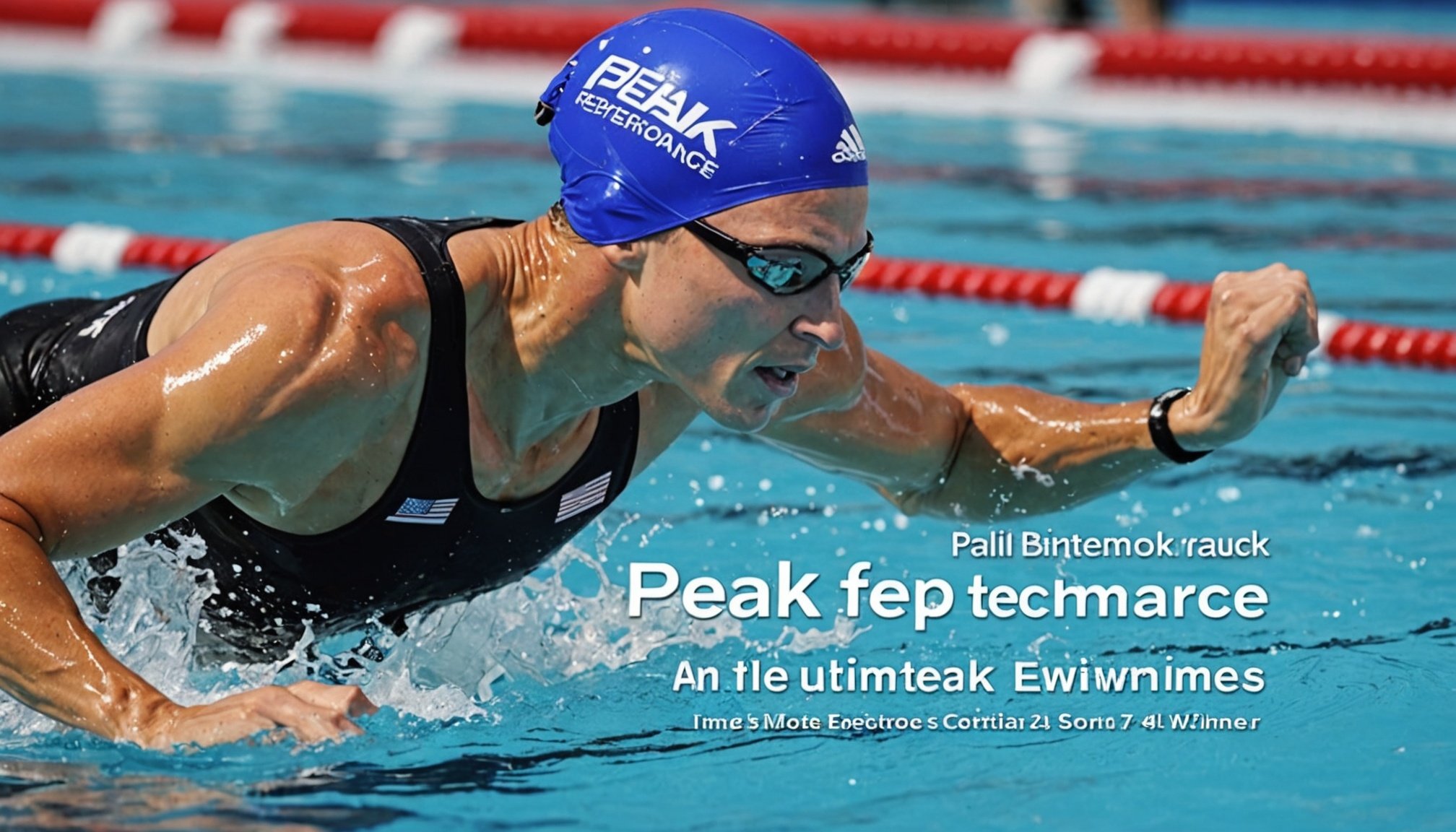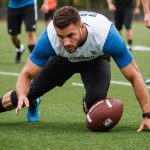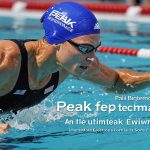Unlocking Peak Performance: The Ultimate Stroke Technique Handbook for Competitive Swimmers Across All Events
Understanding the Foundations of Swimming Technique
When it comes to competitive swimming, the difference between a good swimmer and a great one often boils down to technique. A well-refined stroke technique is the cornerstone of peak performance in the water. Here, we’ll delve into the essential elements of swimming technique and how to optimize them for various events.
Body Position and Alignment
The foundation of any swimming stroke is the body position. A streamlined body reduces drag, allowing the swimmer to move more efficiently through the water. Here are some key points to focus on:
Also to discover : Ultimate guide to preventing muscle cramps for long-distance runners during races
- Horizontal Body Position: Maintaining a horizontal body position minimizes drag. This is achieved by keeping the hips and shoulders aligned and the body as flat as possible.
- Body Alignment: Proper body alignment involves engaging the core muscles to support the spine and maintaining a slight tilt in the hips to reduce drag.
- Head Position: The head should be in a neutral position, with the eyes looking down towards the bottom of the pool. This helps maintain the body’s horizontal alignment.
Table: Key Elements of Body Position and Alignment
| Element | Description |
|
|-----------------------------------------------------------------------------|
| Horizontal Body | Maintain hips and shoulders aligned to reduce drag. |
| Body Alignment | Engage core muscles to support the spine and tilt hips slightly. |
| Head Position | Eyes looking down towards the bottom of the pool. |
Mastering the Four Main Strokes
Each stroke has its unique technique, but there are common principles that apply across all of them.
Freestyle (Front Crawl)
Freestyle is the fastest stroke and the most commonly used in competitive swimming.
Also read : Turbocharge your cycling: proven interval training strategies to boost time trial results
- Arm Movement: The arms should enter the water with the palms facing down and the elbows high. The pull phase should be smooth and powerful, with the hands exiting the water with the palms facing up.
- Leg Movement: The kick should be narrow and alternating, with the feet flexed and the toes pointed.
- Breathing: Breathing should be rhythmic and synchronized with the arm movement, turning the head to the side to take a breath.
Table: Freestyle Technique Key Points
| Element | Description |
|
|-----------------------------------------------------------------------------|
| Arm Entry | Palms facing down, elbows high. |
| Arm Pull | Smooth and powerful pull phase. |
| Leg Kick | Narrow and alternating kick. |
| Breathing | Rhythmic and synchronized with arm movement. |
Backstroke
Backstroke is unique because it is the only stroke where the swimmer is on their back.
- Arm Movement: The arms should enter the water with the palms facing up and the elbows high. The pull phase should be wide and powerful.
- Leg Movement: The kick is similar to the freestyle kick but is performed while on the back.
- Body Position: The body should be as flat as possible, with the hips and shoulders aligned.
Table: Backstroke Technique Key Points
| Element | Description |
|
|-----------------------------------------------------------------------------|
| Arm Entry | Palms facing up, elbows high. |
| Arm Pull | Wide and powerful pull phase. |
| Leg Kick | Similar to freestyle kick but on the back. |
| Body Position | Flat body with hips and shoulders aligned. |
Breaststroke
Breestyle is known for its distinctive kick and arm movement.
- Arm Movement: The arms move in a circular motion, with the hands entering the water in front of the shoulders and pulling back towards the chest.
- Leg Movement: The kick is a frog-like kick, with the legs bending and then kicking outwards.
- Breathing: Breathing occurs during the arm recovery phase, with the head lifting out of the water.
Table: Breaststroke Technique Key Points
| Element | Description |
|
|-----------------------------------------------------------------------------|
| Arm Movement | Circular motion, hands entering in front of shoulders. |
| Leg Kick | Frog-like kick, legs bending and kicking outwards. |
| Breathing | During arm recovery phase, head lifting out of the water. |
Butterfly
Butterfly is one of the most technically demanding strokes.
- Arm Movement: The arms move in a wide, circular motion, with the hands entering the water in front of the shoulders.
- Leg Movement: The kick is a dolphin kick, with the legs moving together in a wave-like motion.
- Breathing: Breathing occurs during the arm recovery phase, with the head lifting out of the water.
Table: Butterfly Technique Key Points
| Element | Description |
|
|-----------------------------------------------------------------------------|
| Arm Movement | Wide, circular motion, hands entering in front of shoulders. |
| Leg Kick | Dolphin kick, legs moving together in a wave-like motion. |
| Breathing | During arm recovery phase, head lifting out of the water. |
Training Tips for Improving Stroke Technique
Improving stroke technique requires consistent practice and a well-structured training plan.
Building Endurance
Endurance is crucial for competitive swimmers. Here are some tips to build endurance:
- Long Swims: Incorporate long swims into your training plan to build cardiovascular endurance.
- Interval Training: Use interval training to simulate race conditions and improve anaerobic endurance.
- Strength Training: Incorporate strength training to build muscular endurance, focusing on exercises that target the muscles used in swimming.
List: Building Endurance Tips
- Long Swims: Incorporate long swims to build cardiovascular endurance.
- Interval Training: Use interval training to simulate race conditions and improve anaerobic endurance.
- Strength Training: Incorporate strength training to build muscular endurance.
Improving Stroke Rate
Stroke rate is a critical component of swimming performance. Here’s how to improve it:
- Drills: Use drills to focus on specific aspects of the stroke, such as arm entry or kick timing.
- Plyometrics: Incorporate plyometric exercises to improve power and speed.
- Taper: Implement a taper phase before competitions to allow the body to rest and peak performance.
List: Improving Stroke Rate Tips
- Drills: Use drills to focus on specific aspects of the stroke.
- Plyometrics: Incorporate plyometric exercises to improve power and speed.
- Taper: Implement a taper phase before competitions to peak performance.
Reducing Drag
Drag is a significant factor in swimming performance. Here are some tips to reduce drag:
- Streamlining: Focus on maintaining a streamlined body position during all strokes.
- Kicking Technique: Ensure the kick is narrow and efficient to reduce drag.
- Arm Entry: Work on entering the water with minimal splash to reduce drag.
List: Reducing Drag Tips
- Streamlining: Maintain a streamlined body position.
- Kicking Technique: Ensure the kick is narrow and efficient.
- Arm Entry: Enter the water with minimal splash.
Breathing and Heart Rate Management
Breathing and heart rate management are essential for maintaining peak performance during swimming events.
Breathing Technique
Proper breathing technique is vital for maintaining a consistent stroke rate and reducing fatigue.
- Rhythmic Breathing: Practice breathing in a rhythmic pattern that synchronizes with the arm movement.
- Relaxed Breathing: Keep the breathing relaxed and natural, avoiding deep gasps for air.
- Breathing Drills: Use drills such as breathing every 2-3 strokes to improve breathing technique.
List: Breathing Technique Tips
- Rhythmic Breathing: Practice breathing in a rhythmic pattern.
- Relaxed Breathing: Keep the breathing relaxed and natural.
- Breathing Drills: Use drills to improve breathing technique.
Heart Rate Management
Managing heart rate is crucial for maintaining endurance and performance during long events.
- Heart Rate Monitoring: Use heart rate monitors to track and manage heart rate during training.
- Pace Control: Practice controlling pace to maintain a consistent heart rate.
- Recovery: Incorporate recovery sessions to help the heart rate return to normal after intense training.
List: Heart Rate Management Tips
- Heart Rate Monitoring: Use heart rate monitors to track and manage heart rate.
- Pace Control: Practice controlling pace to maintain a consistent heart rate.
- Recovery: Incorporate recovery sessions to help the heart rate return to normal.
Individual Needs and Customized Training Plans
Every swimmer has unique needs and strengths. Here’s how to tailor a training plan to individual needs:
Assessing Individual Needs
- Swim Analysis: Conduct a detailed analysis of the swimmer’s technique to identify areas for improvement.
- Fitness Testing: Perform fitness tests to assess endurance, strength, and speed.
- Goal Setting: Set specific, measurable, achievable, relevant, and time-bound (SMART) goals based on the swimmer’s needs and aspirations.
List: Assessing Individual Needs Tips
- Swim Analysis: Conduct a detailed analysis of the swimmer’s technique.
- Fitness Testing: Perform fitness tests to assess endurance, strength, and speed.
- Goal Setting: Set SMART goals based on the swimmer’s needs and aspirations.
Customizing the Training Plan
- Periodization: Break down the training year into specific periods focused on different aspects of training (e.g., endurance, speed, strength).
- Specific Drills: Incorporate drills that target specific areas of improvement identified in the swim analysis.
- Flexibility: Be flexible with the training plan, adjusting it as needed based on the swimmer’s progress and feedback.
List: Customizing the Training Plan Tips
- Periodization: Break down the training year into specific periods.
- Specific Drills: Incorporate drills that target specific areas of improvement.
- Flexibility: Be flexible with the training plan, adjusting it as needed.
Real-Life Examples and Success Stories
Let’s look at some real-life examples of swimmers who have achieved peak performance through focused training and technique improvement.
Livia November’s Journey
Livia November, a competitive swimmer, improved her freestyle time significantly by focusing on her body alignment and stroke rate. Here’s what she had to say:
“By working on my body alignment and ensuring that I maintain a streamlined position, I was able to reduce drag and swim faster. Additionally, incorporating plyometric exercises into my training helped me increase my stroke rate and overall speed.”
Anaïs Podévin’s Success
Anaïs Podévin, a swimmer from the Stade Clermontois Natation, achieved multiple podiums in various events by tailoring her training plan to her individual needs.
“Understanding my strengths and weaknesses through detailed swim analysis and fitness testing allowed me to create a customized training plan. This focused approach helped me improve my endurance and speed, leading to better performance in competitions.”[3]
Practical Insights and Actionable Advice
Here are some practical insights and actionable advice to help you unlock peak performance in swimming:
Effortless Swimming
Effortless swimming is about using technique to reduce effort while maintaining speed. Here’s how to achieve it:
- Focus on Technique: Spend time practicing and perfecting your stroke technique.
- Relaxation: Keep your body relaxed, especially during the recovery phase of the stroke.
- Breathing: Practice rhythmic breathing to maintain a consistent stroke rate.
List: Effortless Swimming Tips
- Focus on Technique: Practice and perfect your stroke technique.
- Relaxation: Keep your body relaxed, especially during the recovery phase.
- Breathing: Practice rhythmic breathing to maintain a consistent stroke rate.
Open Water Swimming
Open water swimming presents unique challenges, but with the right technique, you can adapt and perform well.
- Sighting: Practice sighting techniques to navigate efficiently in open water.
- Drafting: Learn to draft behind other swimmers to reduce energy expenditure.
- Pacing: Control your pace to maintain a consistent heart rate and conserve energy.
List: Open Water Swimming Tips
- Sighting: Practice sighting techniques to navigate efficiently.
- Drafting: Learn to draft behind other swimmers to reduce energy expenditure.
- Pacing: Control your pace to maintain a consistent heart rate and conserve energy.
Unlocking peak performance in swimming is a journey that requires dedication, consistent practice, and a well-structured training plan. By focusing on technique, building endurance, improving stroke rate, reducing drag, and managing breathing and heart rate, swimmers can achieve their full potential.
Remember, every swimmer is unique, and tailoring the training plan to individual needs is crucial. With the right approach and mindset, you can swim faster, more efficiently, and achieve peak performance in the water.
In the words of Anaïs Podévin, “The key to success in swimming is not just about putting in the hours, but about putting in the right hours with a focused and tailored approach.” By following the tips and insights provided here, you can take your swimming to the next level and unlock your peak performance.










